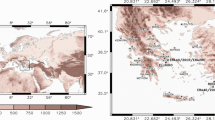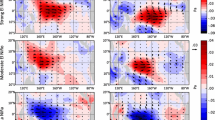Abstract
It seems that the wind shear theory is accepted for the explanation of sporadic E at mid and low latitudes. Some examples from Arecibo are displayed to show this. The effect of lunar tides should then modify the wind-shear theory in a manner that yields the observed features of the lunar tide in the critical frequency foEs and the height h′Es of the sporadic E. This is shown to imply that the phase of the lunar tide in h’Es should be the same as the phase of the lunar tide in the eastward wind and that the phase of the lunar tide in foEs is three hours later. Hourly values of foEs, fbEs (the blanketing critical frequency) and h′Es from several observatories are analysed for the lunar semidiurnal tide. It is found that the phase of the tide in foEs is often about 3 hours later than for h′Es in agreement with the theory. Seasonal variations in the tide are also examined with the statistically most significant results (largest amplitudes) usually occurring in summer. After reviewing the many difficulties associated with determining the lunar tide in Es, both experimentally and theoretically, the analysed phase results are compared with what might be expected from Hagan’s global scale wave model. Agreement is only fair (a success rate of 69% among the cases examined) but probably as good as might be expected.
Similar content being viewed by others
Author information
Authors and Affiliations
About this article
Cite this article
Stening, R.J. The lunar tide in sporadic E. Annales Geophysicae 17, 1344–1351 (1999). https://doi.org/10.1007/s00585-999-1344-2
Received:
Revised:
Accepted:
Issue Date:
DOI: https://doi.org/10.1007/s00585-999-1344-2




